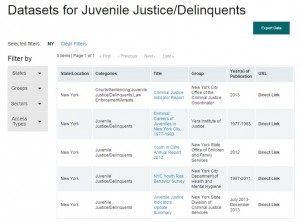Hall of Justice: Find Criminal Justice Statistics in One Convenient Place
 We all were in the situation when we are looking for criminal justice related statistics without knowing where to look or where to even begin. No more. Hall of Justice, a project of the Sunlight Foundations, is trying to change that. Although not comprehensive, it contains nearly 10,000 datasets and research documents from all 50 jurisdictions, DC, US territories, and federal government. Its newly launched website offers searchable inventory of publicly available criminal justice statistics and documents in one convenient place, thereby improving transparency.
We all were in the situation when we are looking for criminal justice related statistics without knowing where to look or where to even begin. No more. Hall of Justice, a project of the Sunlight Foundations, is trying to change that. Although not comprehensive, it contains nearly 10,000 datasets and research documents from all 50 jurisdictions, DC, US territories, and federal government. Its newly launched website offers searchable inventory of publicly available criminal justice statistics and documents in one convenient place, thereby improving transparency.
The project explains its methodology in how and which datasets are included. You can learn more about the Sunlight Foundation criminal justice work here and the spreadsheet of datasets is available here.
Users may search for available datasets and then narrow by state, groups, sectors (government, non-profit, private, etc.), and access type (not machine readable, open, restricted, closed, etc.). The results display in a table listing the state/location, category, dataset title, group issuing the dataset, years included, and the direct link to access it. The major categories include: Corrections, Courts, Crime, Financial, Juvenile Justice, Law Enforcement, Victims, and Miscellaneous. All categories are further divided into subcategories.
For example, the result page looks as follows (look to the left) when looking for Juvenile Justice – Delinquents datasets for the state of NY, listing 5 results with live links where the listed statistics can be accessed.

